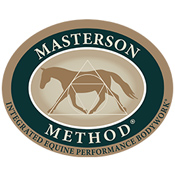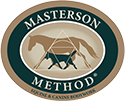
Henning was born on Fyn and grew up in the countryside of Denmark. Having had a lifelong fascination and love for horses, he only got into horse riding as an adult, enjoying dressage, jumping and cross-country riding, mainly for recreational pleasure.
After finishing a Masters in Musicology at Aalborg University, Denmark, and three years of study in Los Angeles, USA, he finally ended up in Copenhagen. Giving up on a teaching career, Henning is now the founder of Amager Hestemassage, a business providing different modes of muscle work and release of tension to all horses in need. Besides being a Masterson Method Practitioner, he is certified as a massage therapist in traditional massage techniques and sports massage for both humans and horses.
Since I was introduced to horse riding and horsemanship, I have always focused on the welfare of the horse in the firm belief that a relaxed and comfortable horse moves and behaves better than a stressed and uncomfortable one. I was soon to be amazed to discover the relaxing effect of a gentle touch and some light muscle work on an otherwise tense riding school horse and how it improved the general riding experience for both me and the horse.
That gave birth to a growing interest in the musculoskeletal system in both human and horse, and a study of anatomy, physiology and biomechanics to better understand movement and the physical interaction between rider and horse. The study of anatomy and biomechanics helps to pinpoint the problem areas and thereby making the massage techniques more efficient. However, sometimes muscle problems are caused by tension in joints or junctions and they need to be addressed to solve the problems.
Back in 2008, I was on the internet to find something on equine massage and I came across the DVD, Equine Massage for Performance Horses, The Masterson Method. I bought it, I watched it and I was intrigued. I realized that it was not at all, what I had expected, but it was exactly what I was looking for. The gentle touch, the interaction with the horse, and addressing tension in the key junctions of the horse, all fitted into my toolbox, and I just knew, I had to learn the method.
